STEPS
TOOLS
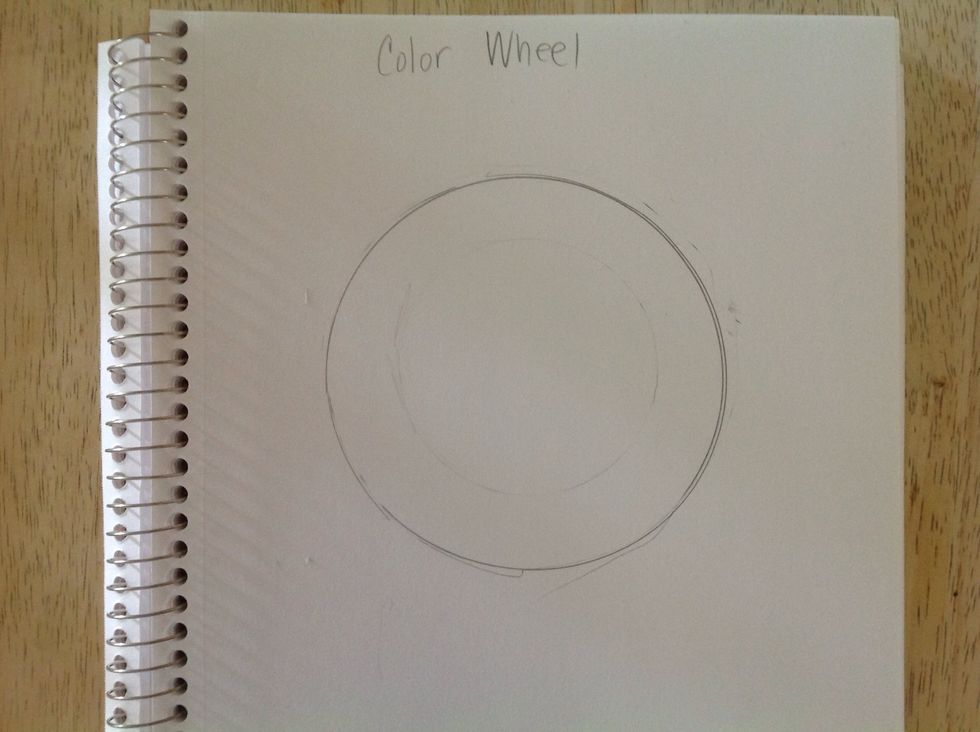
Label a page of your sketchbook "Color Wheel". Draw a circle using your compass, a template, or freehand. This activity is for learning, not for show.
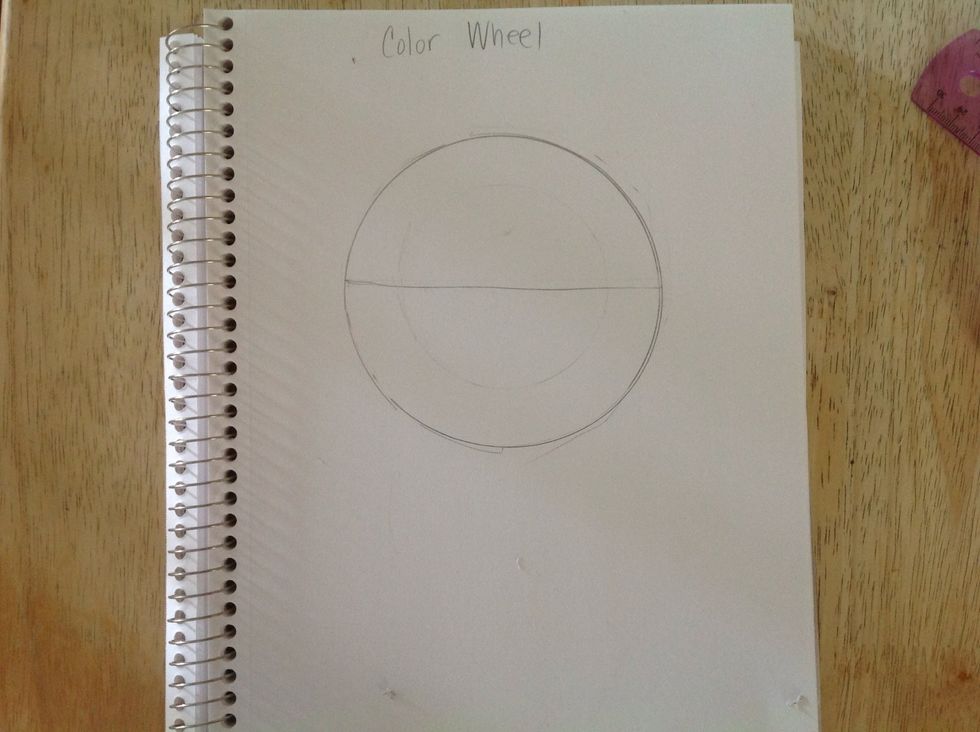
Draw a horizontal line to divide the circle in half.
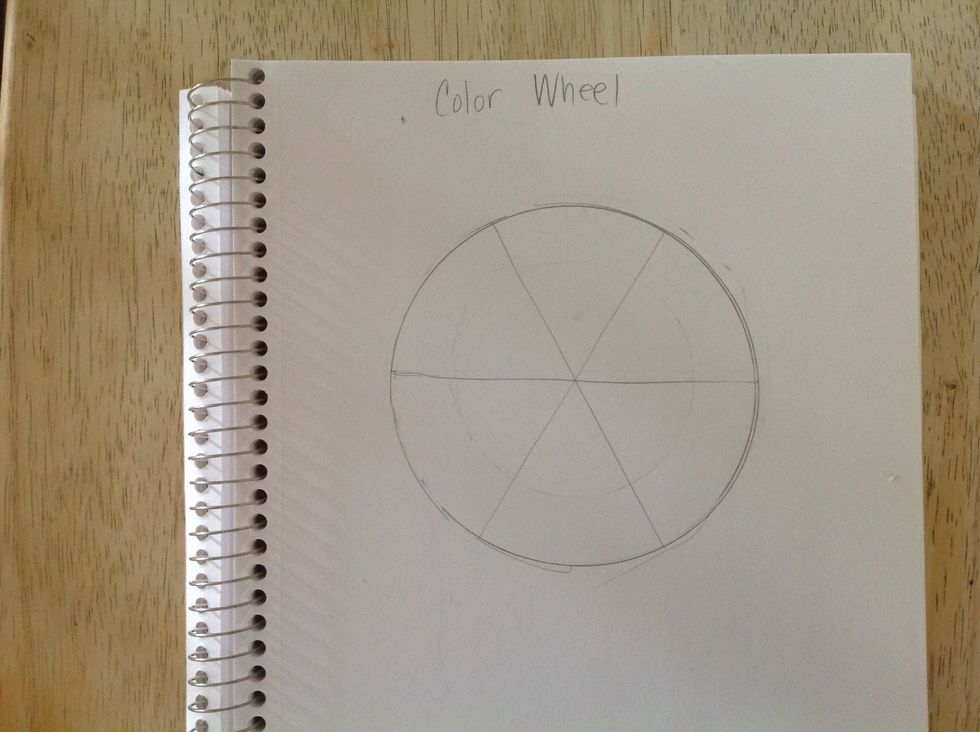
Draw an "x" that runs through the center of your circle. You want your drawing to look like a pizza with 6 pieces that are close to the same size.
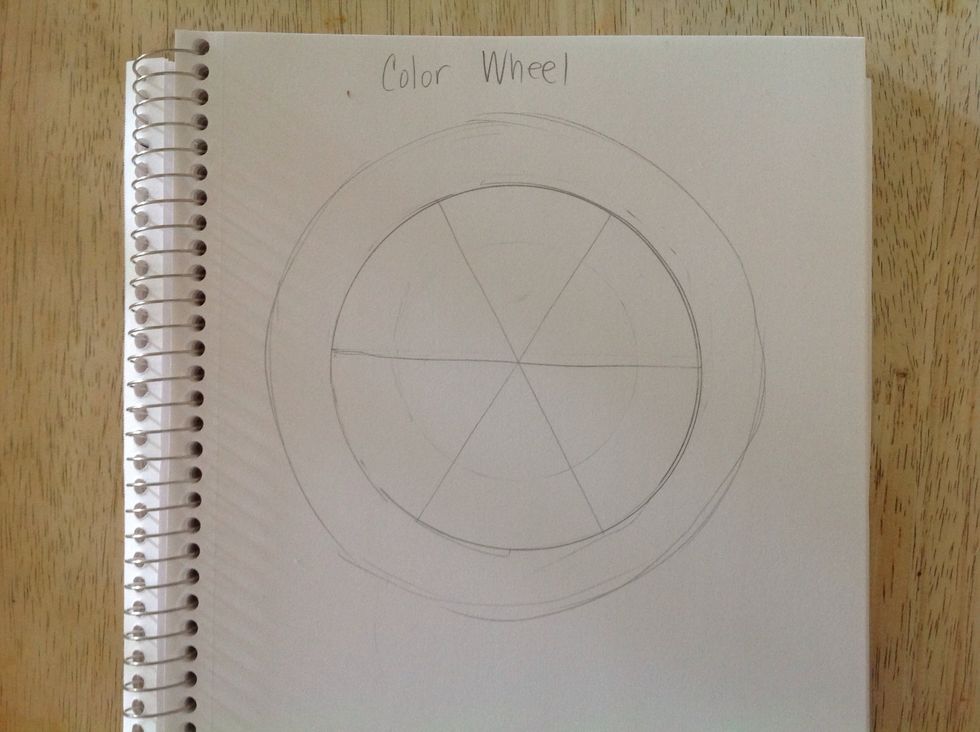
Add an outer ring to your original circle.
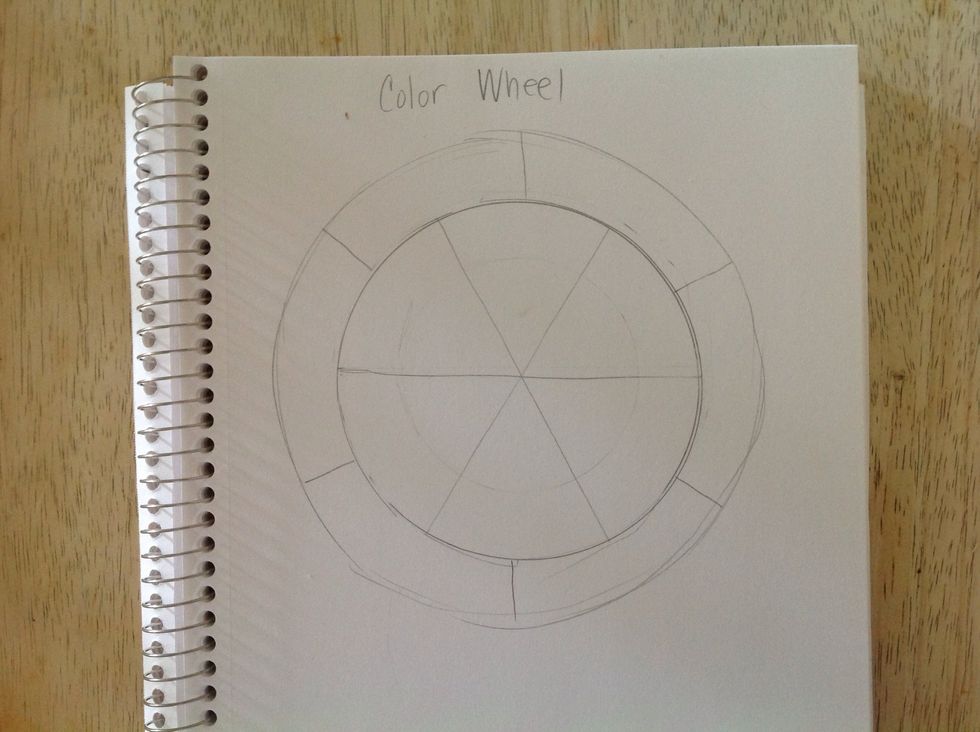
Add a line from the edge of each wedge, or slice, that connects to the outer circle. These lines should be at the halfway point of each wedge.

Now it is time to label our sections. The top, center wedge should be labeled "red". Skip a wedge and label the next one "yellow". Skip another wedge and label the next one "blue".
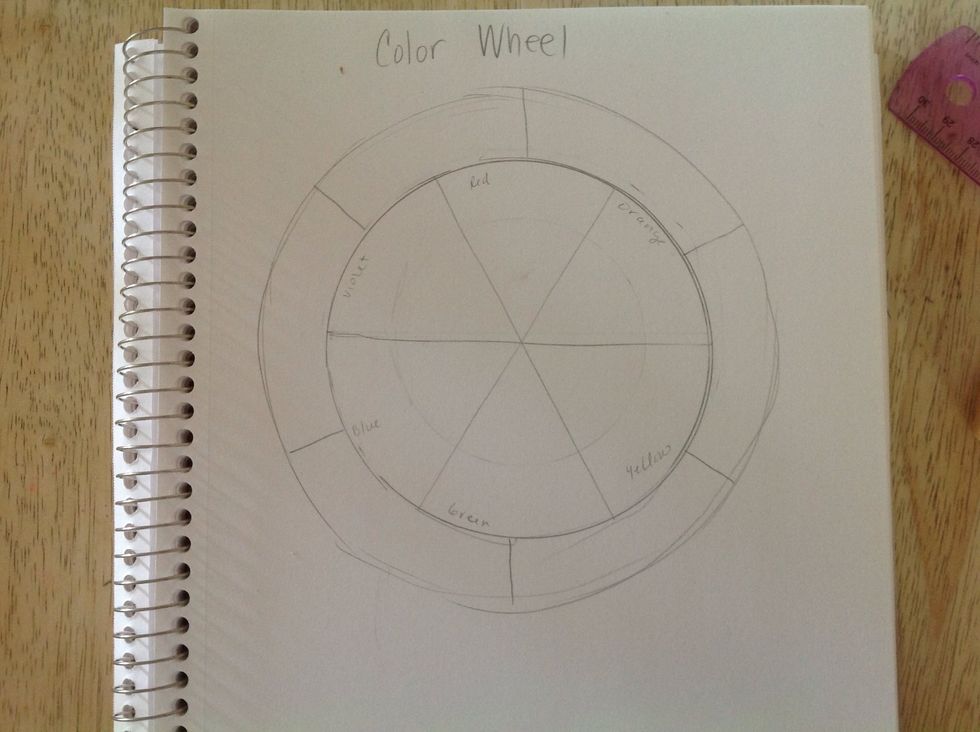
Label the wedge between red and yellow "orange". Label the wedge between yellow and blue "green". Label the wedge between blue and red "violet".
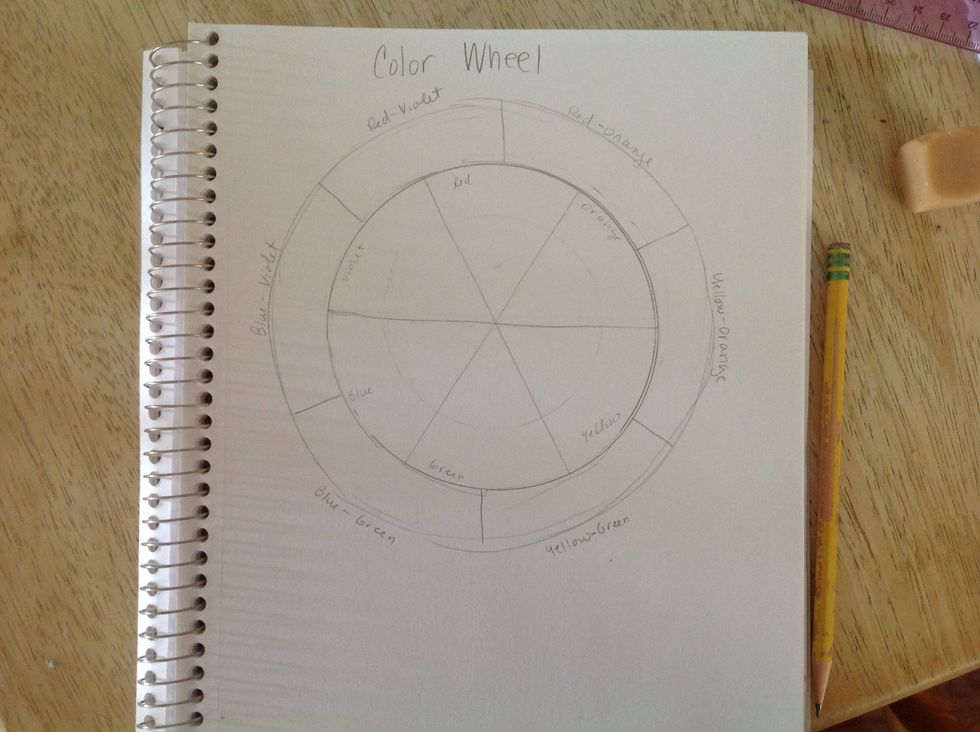
Label the section that touches both red and orange "red-orange". Label the section that touches both orange and yellow " yellow-orange".
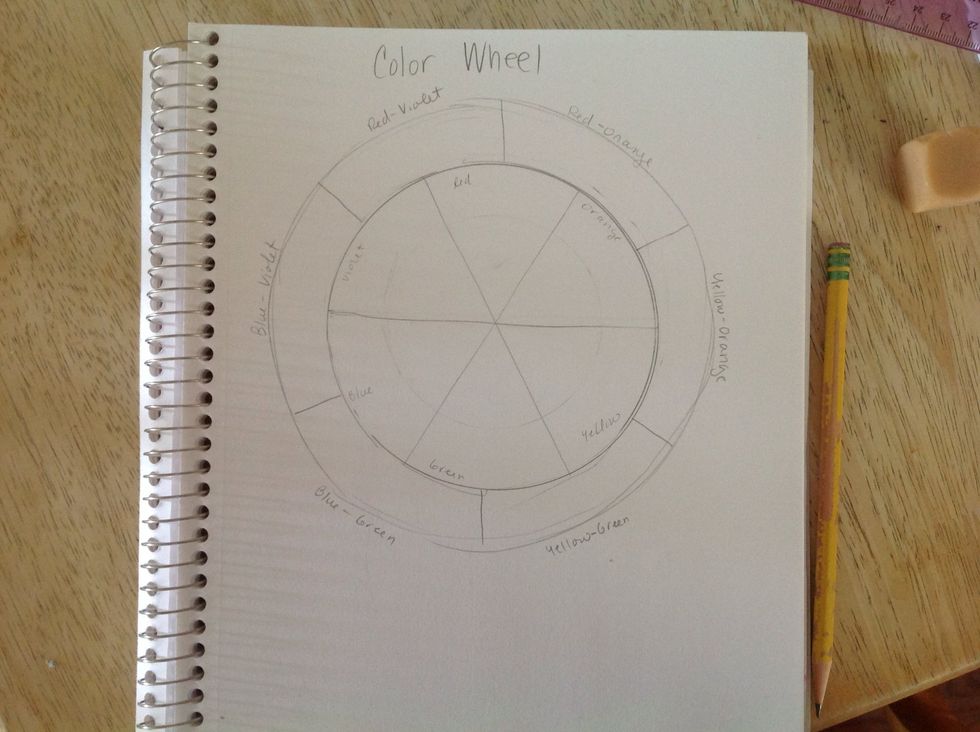
Label the section that touches both yellow and green "yellow-green". Label the section that touches both blue and green "blue-green"
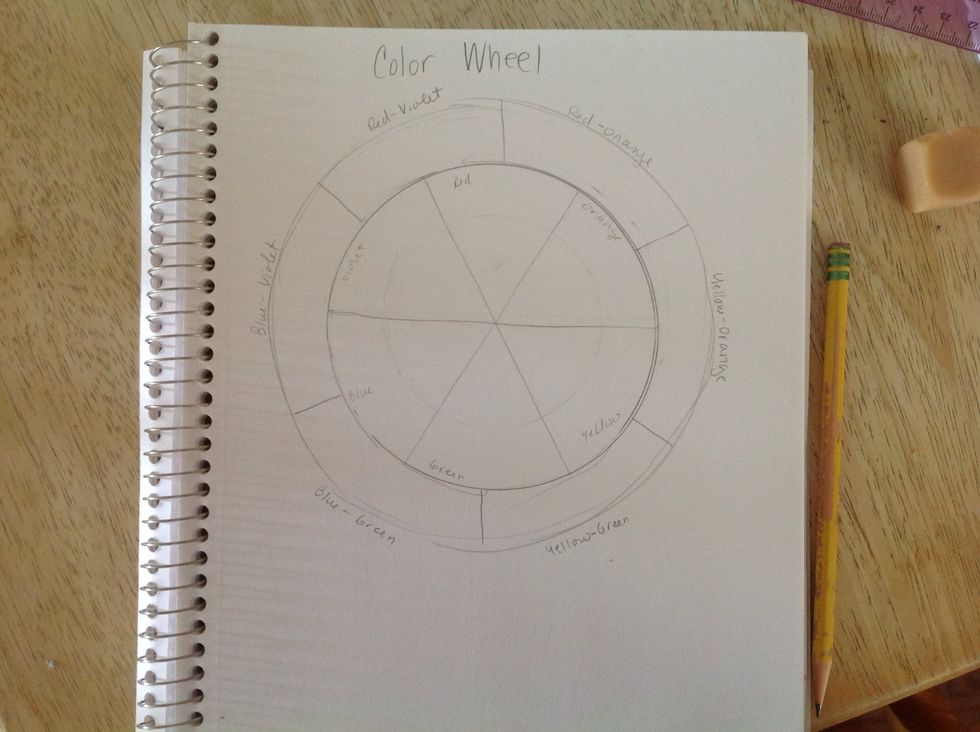
Label the section that touches both blue and violet "blue-violet". Label the section that touches both violet and red " red-violet".
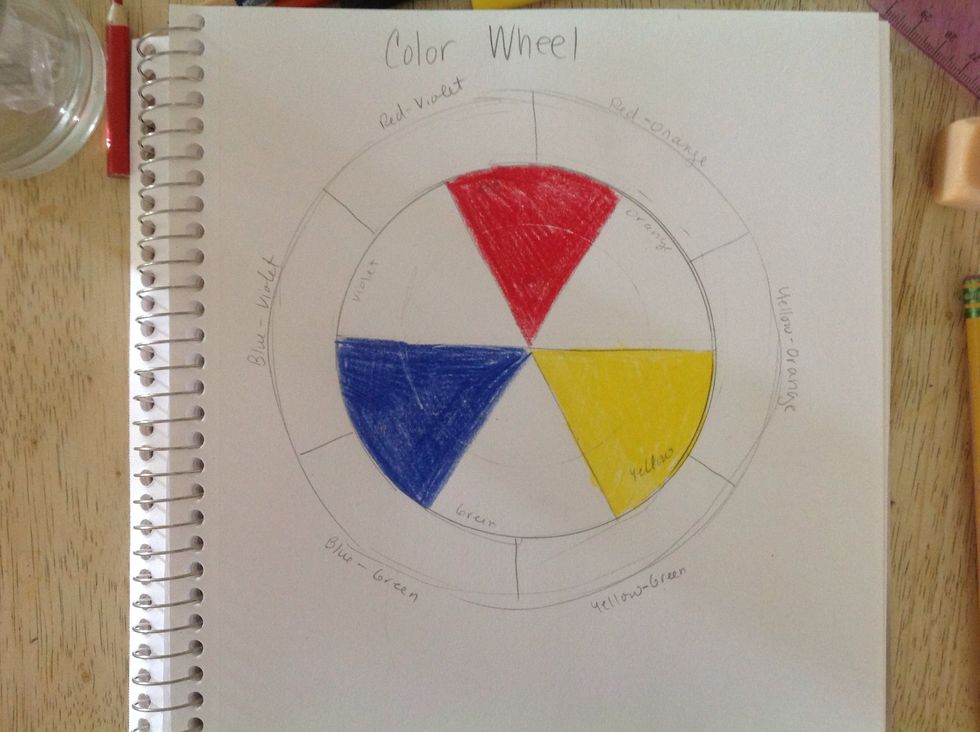
Now use your crayon or colored pencils to fill in the red, yellow, and blue sections. These are your primary colors. They can be used to mix all other colors. Other colors do not mix to make them.
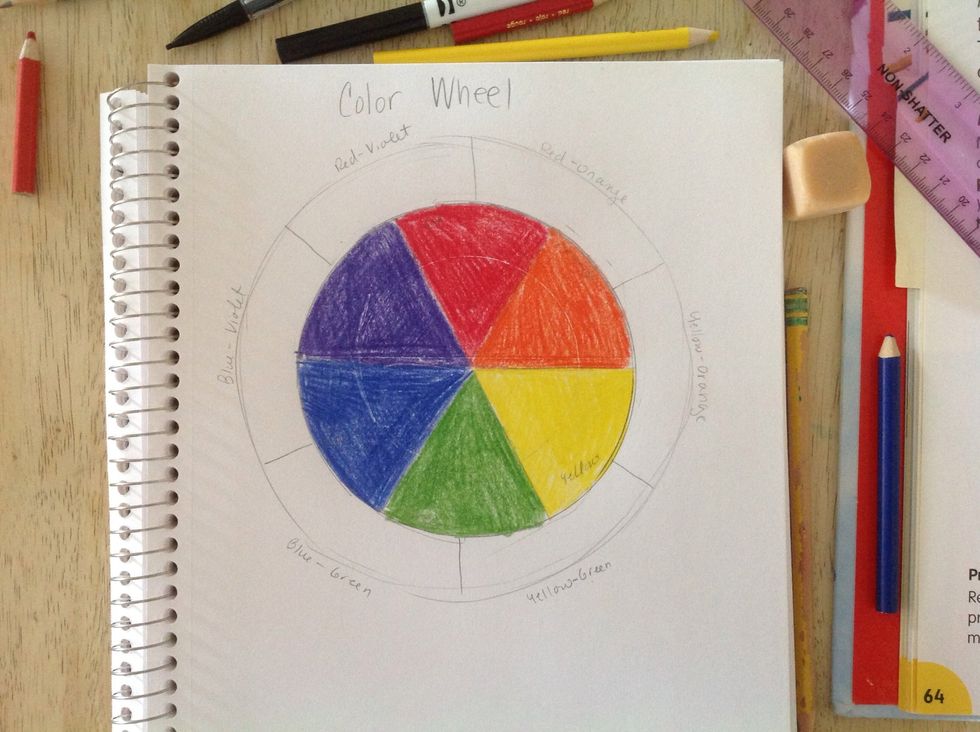
Color in your orange, green, and blue wedges. These are the secondary colors. They are created by mixing 2 primary colors together. The secondary colors sit between the colors that made them.
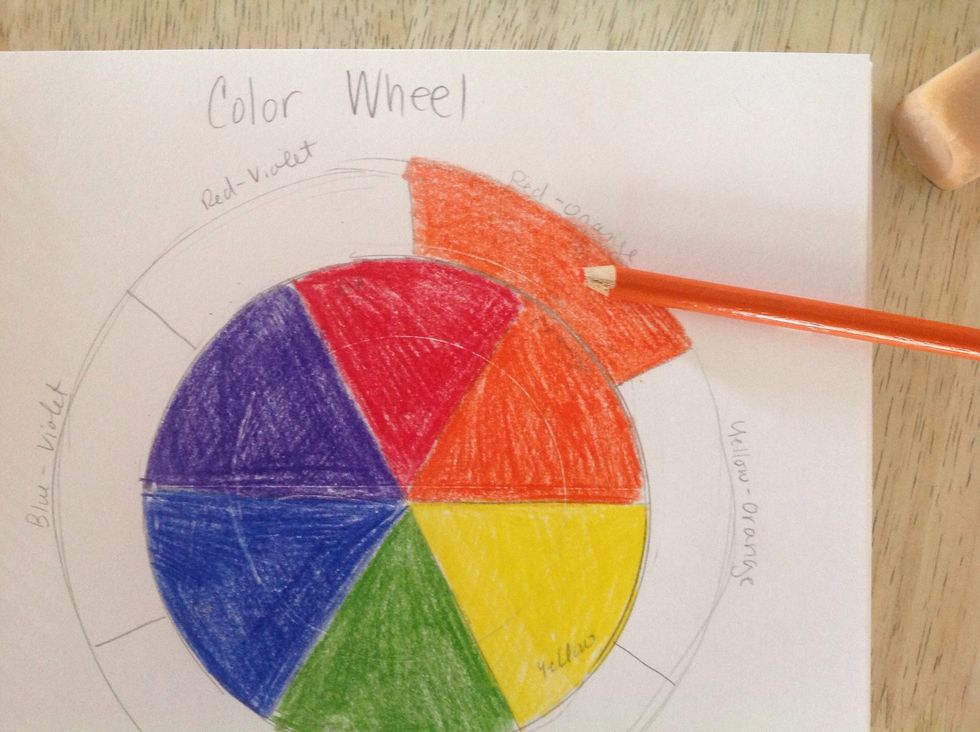
Now let's create our tertiary colors. For red-orange, begin by coloring in the section orange.

Color over your orange with red. Now you have red-orange. Tertiary colors happen when you mix a primary and a secondary color together.
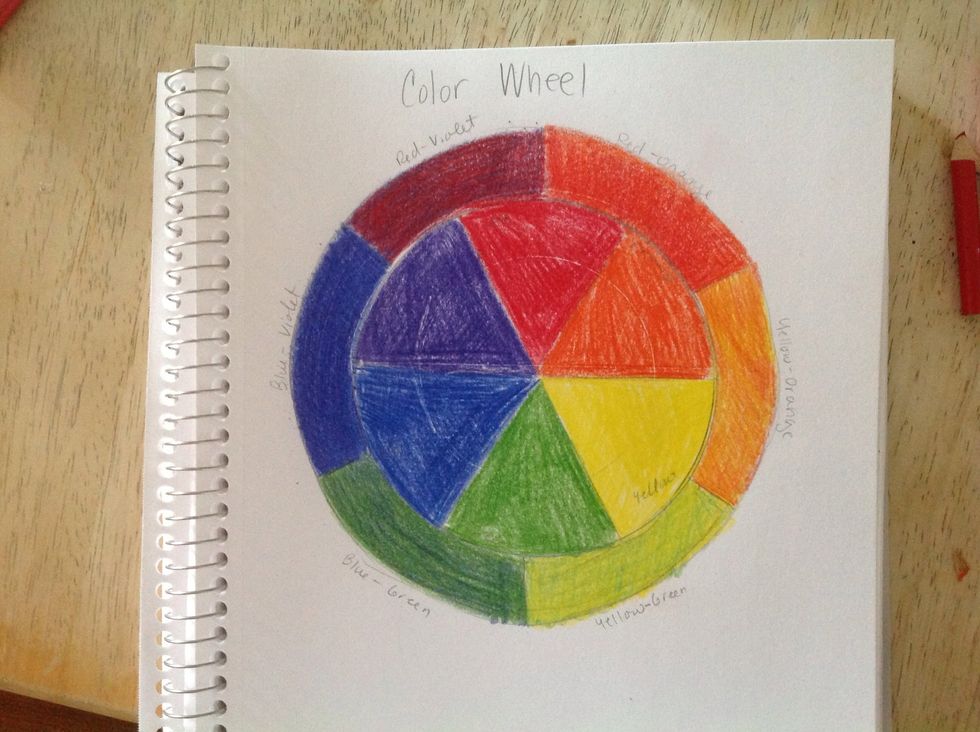
Repeat the process until your color wheel is complete. Your tertiary color sections should be touching the colors that made them. Now you have a color wheel to refer to when you are mixing colors.
- A sketchbook
- A circular template or compass (optional)
- Colored pencils or crayons
- A ruler (optional)
The Conversation (0)
Sign Up